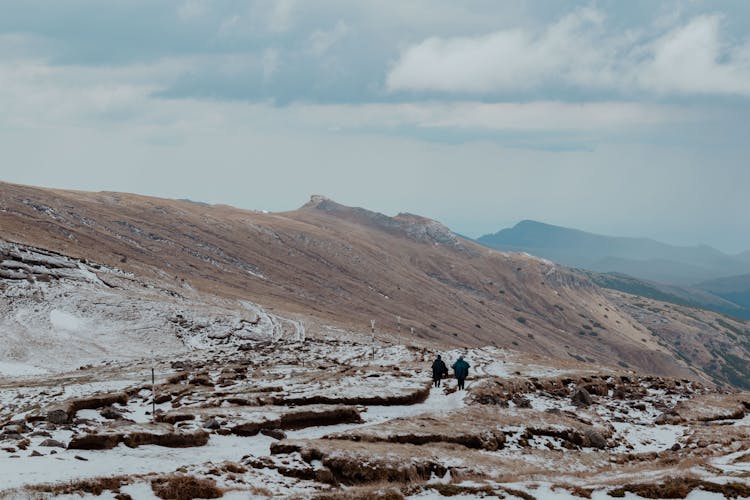All Categories
Featured
Essential Tips for Hiking Trails
👣 TLDR Summary- 🗺️ Always plan your hike in advance.
- 💧 Stay hydrated by carrying enough water.
- 🤝 Hike with a buddy for safety.
- 🚫 Never feed or touch wildlife.
- 🥾 Wear sturdy shoes and appropriate clothing.
When it comes to hiking in the mountains, safety should always be your top priority. The art of planning a hike successfully hinges on knowing your limits. Assess your level of fitness, the trail's difficulty, and the weather conditions. By understanding your physical abilities and the environment around you, you can make better decisions on what trails are suitable for you along with your hiking companions. Remember, it's perfectly okay to start with shorter, easier trails if you're new to this activity!
Prior planning of your hike is vital in ensuring a safe experience. Before you step foot on the trail, take some time to learn about your intended route. Check for potential hazards, elevation changes, and the estimated time to complete the hike. Trails often vary in conditions, and knowing what to expect will significantly enhance your readiness. You might even want to invest in a quality map, such as the Great Smoky Mountains National Park Map, available on Amazon, to assist in your navigation. Keep an alternative route in mind in case your original plan faces unexpected challenges!
What you bring along is equally important to your hike's safety. Always pack essential items such as water, snacks, first-aid supplies, navigation tools, extra clothing layers, a headlamp, and a sturdy pair of shoes. A reliable pair of shoes makes all the difference in comfort and safety—the right footwear can prevent accidents from slips and provide support during challenging terrain. Wearing appropriate clothing based on the weather also shields you against potential hazards. Consider enhancing your hiking essentials with lightweight, weather-resistant materials tailored for outdoor activities.
While hiking, smart decisions are crucial. Familiarize yourself with local conditions and stay updated on any weather changes. Incorporating consultation with local tide tables and weather forecasts into your planning ensures you're aware of challenges you might face. Moreover, even the smallest wildlife can pose threats; hence, spray for mosquitoes and check for ticks after your hike to keep yourself safe from bites and potential illnesses. Tailoring your experience to suit the local ecosystem is an essential part of hiking safely.
Having an outdoor plan will not only help you stay organized but also aid if emergencies arise; always tell someone where you are going. Whether it's a detailed itinerary or a simple message, letting someone know your hiking plans is a wise step in staying safe. As a further precaution, consider hiking with a buddy. This not only provides companionship but also allows for help during unexpected situations. Remember, two sets of eyes are better when spotting trail markers or dealing with issues along the way!
Being courteous on the trail is equally important. Practice good trail etiquette by yielding to others, especially those on foot. Avoid creating obstacles for fellow hikers, and educate yourself on minimal impact practices such as leaving no trace. These actions contribute to a safer and more enjoyable experience for all adventurers. To enhance your knowledge about this, check out useful resources like this trail guide.
Staying found is essential, especially in remote areas. Always follow trail markers and signs to keep you on the right path. If you feel lost or unsure, do not panic—take deep breaths, and reassess your surroundings. Use alternative navigation methods, such as compasses or navigation apps, to help determine your direction. Conserving battery power for your devices is a great strategy to ensure your tools remain available when truly needed.
Being prepared for the unexpected is an essential part of hiking safety. Weather can shift from sunny to stormy within moments, so be ready to adjust your plans. Make sure to carry extra attire and gear for any potential weather changes. Identifying poison oak and being cautious around snakes are important skills for every hiker. Knowledge about the wildlife and flora in your hiking area not only enhances your adventure but also keeps you safe. And remember, never feed or touch wildlife, as this can lead to dangerous encounters.
Upon finishing your hike, remember to check for ticks thoroughly! These little pests can easily latch onto your clothing or skin during an adventure. Identifying poison oak and avoiding contact with it is also crucial; it can cause severe skin irritations. Taking time for personal checks and taking care of your outdoor gear before heading home ensures you maintain your safety long after your adventure ends.
By following these mountain trail safety tips, you can embark on exciting adventures with heightened awareness and preparation. Hiking can be one of life's great pleasures if you ensure you take necessary precautions for your safety, comfort, and peace of mind. Join the many exploring the beautiful mountains while keeping these fundamentals at the forefront of your outdoor experiences!
Crucial Reminders
🌲 Key Takeaways- 🧢 Plan your hike according to your fitness level.
- 🛑 Always stay aware of your surroundings.
- 🧭 Learn basic navigation skills to find your way.
- 🌧️ Be prepared for sudden weather changes.
- 🧊 Stay hydrated and take regular breaks.

Latest Posts
Maximizing Your Engagement Ring's Worth Expert Tips and Tricks
A Comprehensive Guide to Selective Herbicides
The Essentials of Engagement Ring Valuation